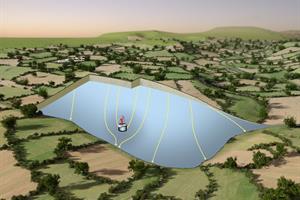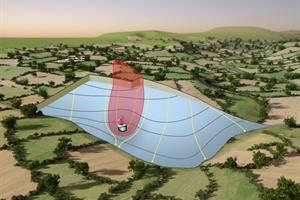What is a Zone of Contribution?
Some Group Water Schemes (GWS) get their drinking water from a well (borehole) or spring. When a borehole is being pumped, it draws down the water table creating a cone of depression around the borehole.

The cone of depression forms part of the zone of contribution (ZOC) or capture zone to the borehole.

The size of the ZOC to the borehole depends on:
- How much water the GWS takes from the borehole (the abstraction)
- The amount of percolating rainfall that can get into the aquifer to balance the abstraction
Why draw up or delineate a ZOC?
Establishing the ZOC of a borehole is a key step in protecting a GWS's drinking water source as it can highlight the groundwater vulnerability within the ZOC. By delineating or marking out the ZOC, a community knows where their water is coming from. They can manage their water source— and what goes on in its ZOC— better.
Establishing a specific Zone of Contribution for a GWS's well/borehole is more feasible than using an arbitrary, one-size-fits all buffer zone or topographic catchment. It is a tailor-made source protection and management unit for the GWS. The 'Zone of Contribution' (ZOC) provides an area in which to focus further investigation and is an area where protective measures can be introduced to maintain or improve the quality of groundwater.